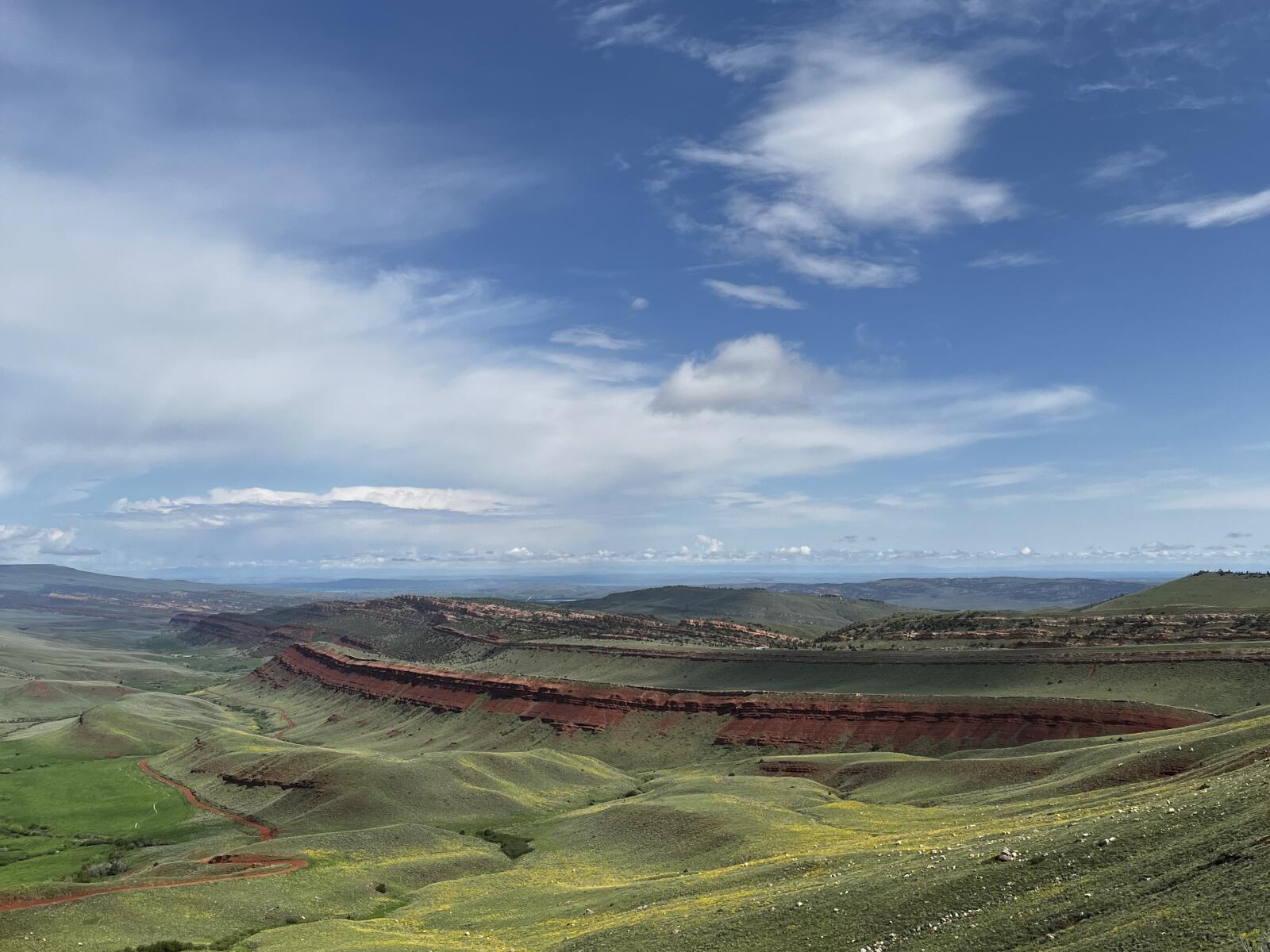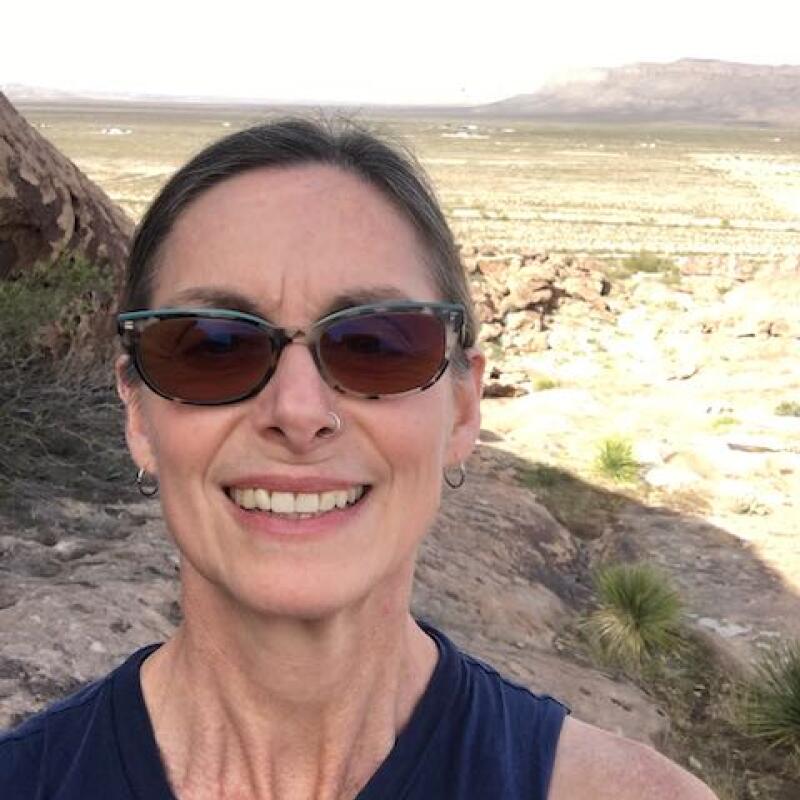It’s mid-June, and already Brian and I are home from both of our planned vacations. We flew to England mid-May to visit friends who had moved Across the Pond. We had two climbing days while we were there, and decided to only go bouldering so we didn’t have to travel with a lot of gear and pay exorbitant fees. All we brought were shoes and chalk because we could “hire,” as the English say, a bouldering pad for a day.
Climbing on hard gritstone, similar to what we find at Coopers Rock State Park in WV, was “loov-leh” but humbling. The UK was in the midst of a significant drought, so every day was dry and sunny and in the mid-60s Fahrenheit. Stanage, outside of Sheffield, held a special shine for Brian who has been reading about and looking at pictures of the iconic boulders there since he was a young climber. I was stymied by Stanage since I haven’t been bouldering much in the past year. But on our second day out at Almscliff, local to where we were staying in Yorkshire (“Yawk-sheh”), I felt more myself and topped out a few boulders, including the classic of the area, Morell’s Wall.
We were home for about 10 days and then headed out again, this time, on a total climbing road trip to Wyoming.
For a summertime road trip, I’ve decided that Wild Iris in Wyoming is one of the best sport climbing areas to visit. We encountered every kind of weather there except extreme heat and humidity. Thankfully we remembered to bring proper attire— layers and rain jackets— so even when it was cold or rainy, we still went out to the crag and didn’t suffer over-much. I use the term “suffer” rather carelessly here. Or, the discomfort was made bearable by the sheer beauty of the place. Yes, even in the rain. Wild Iris, just outside of Lander, has to be the prettiest place we have ever climbed in the US, and we’ve been around a fair bit. The rock is pocketed limestone, something that we’re not used to. It took us time to learn how to move our bodies along it.
We camped in town part of the time at an RV park— not ideal, but we could pull into a grassy tent site and sleep in our truck. We ignored the ugly, gravel parking lot for the RVs. The perks of staying there were 1) the bathrooms, 2) showers, and 3) laundry— creature comforts for sure when you’re living in your vehicle. 4) There’s a lounging area indoors, which we used on the rainy evenings. The first few days the weather was unpredictable and rain kept popping up in the forecast, and we didn’t want to be caught in that at a higher elevation.
(If you have a stricter budget, Lander actually offers free camping in its city park, which isn’t half bad. There are bathrooms and water at least, and the Little Popo Agie River runs by.)
Once the weather settled down and got warmer, we spent a few nights up at the Aspen Glade campground. The only “creature comfort” up there was the pit toilet and toilet paper. We had to bring our own water and everything else we wanted or needed.The perks of this rustic campground was 1) the trail leading to the climbing areas started right there, and, 2) man, it smelled so good!— wind and pine trees and sun and dirt and grass and rocks— the smell of the mountains, people. 3) It was also the start of wildflower season up there, and the meadow we hiked across every day was bursting with color by the time we left to drive home. 4) There was an insanely beautiful view around every corner— okay, except when you used the pit toilet; nothing to be seen there, folks.
The main reason I’m writing about this is not necessarily to encourage you to go climbing outside for your summer vacation— although, I do want to do that, especially if you haven’t before. The reason I’m still a climber after all these years is because of the places that climbing has taken me. When you travel to go climbing, you get to see out-of-the-way sights that your basic tourist does not get to see. You get to experience climbing on different types of rock. It gives you a unique, meaningful way to engage with nature that might cause you to care for it deeply. These places can become part of us.
And also, these places potentially pull disparate groups of people together. When we meet people in these areas, we sometimes become close friends, even if we hold nothing else in common.
As you may have heard, “on June 10, Senate Republicans added an amendment to the Senate budget reconciliation bill, also known as the “One Big Beautiful Bill,” that would mandate the sale of 3.3 million acres of federally-owned land across 11 Western states by 2030. … The crags in the following areas, which Climbing editors cross-referenced with Mountain Project coordinates, will be put up for sale in whole or in part:
Ten Sleep Canyon, Wyoming
Vedauwoo, Wyoming
Wild Iris, Wyoming
Buttermilks, California
Pine Creek Canyon, California
Shelf Road, Colorado
Joe’s Valley, Utah
Maple Canyon, Utah
The Fisher Towers, Utah
Mill Creek, Utah
Little Cottonwood Canyon, Utah
Cochise Stronghold, Arizona
Sedona, Arizona
The Fins, Idaho
Smith Rock, Oregon (outside the state park boundaries)
Parts of Index, Washington
Leavenworth, Washington”
Turns out, this land sell-off was dropped from the bill over the weekend. This seems like a (very) small win. I know that there are worse happenings than this in the US and the world at large at the moment. I know that potential violence to land may seem like a frivolous concern when compared with actual violence to human beings, but I think both are important to fight against. We need outdoor places of beauty for retreat. We need these arenas in which to play. I’ve been to seven of the areas on the list, and some of them multiple times, and so I know deeply what could have been lost. Having refuges where we can escape to for a time allows us to gain new perspective and hope, I think. Without witnessing beauty, it’s much easier for us to sink into despair and accept things the way they are.
This post was originally going to be a call to protest, a request for everyone to contact their senator and say no to the land sell-off. I’m grateful that this issue has been resolved. It’s at least one less thing to worry about at a time when there is a lot to worry about. Those who already did protest and asked their senator to say no to this amendment made a big difference. Even small acts of resistance matter.

